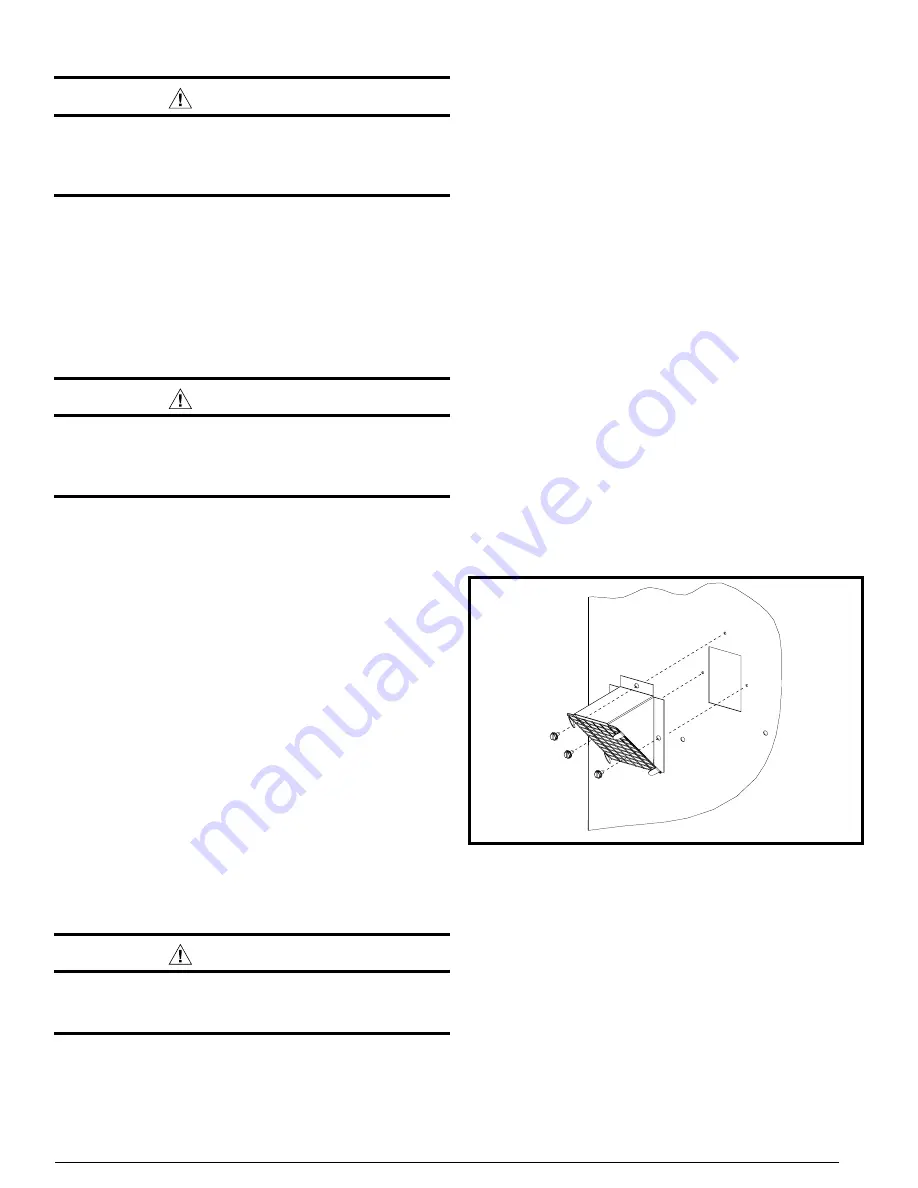
7
General Information
WARNING:
Installation methods other than those described in
the following sections must comply with the National
Fuel Gas Code and all applicable local codes for
providing sufficient combustion air to the unit.
• Provisions must be made during the installation of this unit
that provide an adequate supply of air for combustion.
• Instructions for determining the adequacy of an installation
can be found in the current revision of the NFGC (ANSI Z223.1
/ NFPA54).
Consult local codes for special requirements
.
These requirements are for US installations as found in the
NFGC.
• The requirements in Canada (B149.1) are structured
differently. Consult with B149.1 and local code officials for
Canadian installations.
WARNING:
Combustible air must not be drawn from a
contaminated atmosphere. Excessive exposure to
contaminated combustion air will result in safety
and performance related problems.
• To maximize heat exchanger life, the combustion air
must be free of chemicals that can form corrosive acidic
compounds in the combustion gases. The recommended
source of combustion air is to use clean air from outside.
DO NOT place any chemicals with flammable or caustic
vapors or these other corrosive chemicals near the vent
termination:
• Gasoline/Kerosene
• Permanent wave solutions
• Chlorinated waxes and cleaners
• Chlorine based swimming pool chemicals
• Water softening chemicals
• De-icing salts or chemicals
• Carbon tetrachloride
• Halogen type refrigerants
• Cleaning solvents
• Cements, glues, paint removers, varnishes, etc.
• Hydrochloric acid
• Masonry acid washing materials
• Plumbing Stack
Vent Termination
This unit has been equipped with an integral venting system
and designed to operate only with this venting system. No
additional venting shall be used. This unit must be vented to
the outdoors.
WARNING:
This unit is intended for outdoor installation only.
Do not vent the unit through a conventional venting
system.
A vent cover assembly has been supplied with the unit. and
can be found secured to the gas controls within the control
area of this unit.
The vent cover assembly must be installed
to assure proper operation of the unit.
Figure 2. Vent Assembly
shows the proper installation of the vent cover
assembly over the vent outlet on the exterior of the corner
panel. The fasteners used to secure the vent cover assembly
have been included in the owner’s package. The following
list summarizes the requirements for the location of the vent
system termination:
• The location of the vent termination must be consistent
with the National Fuel Gas Code (ANSI Z223.1) or CAN/
CGA-B149 Installation Codes.
• The vent termination must be located at least 4 feet
horizontally from any electric meters, gas meters, regulators,
and relief equipment.
• The vent termination must be located at least 3 feet above
any forced air inlet located within 10 feet.
• The vent termination must be located at least 4 feet below,
4 feet horizontally from, or 1 foot above any door, window,
or gravity air inlet into any building.
• The vent termination must be located at least 1 foot above
grade.
• The unit should be installed in a way that prevents any
obstruction of the vent termination during accumulating
snow.
• The unit installation shall avoid areas where condensate
drainage may cause problems by dropping on planters or
patios, etc. Also verify exhaust gases will not impinge on
windows or building surfaces, which may be compromised
or damaged by condensation.
• Do not install the unit such that exhaust from the vent
termination is directed into window wells, stairwells, under
decks, or in alcoves or similarly recessed areas. The vent
termination must not be located above any public walkways.








































